The all weather category of tyres is quickly growing in popularity, as a tyre that can be used in all weathers is a big advantage for people living in snowy climates, it saves changing tyres twice a year between an all season and a winter product.
To find out which of these new all weather category tyres is best, I have tested them in the dry, wet, snow and ice to give you a really good overview of their abilities, and also looked into the the rolling resistance, comfort, noise levels and value, to find out which tyre is best in all conditions.
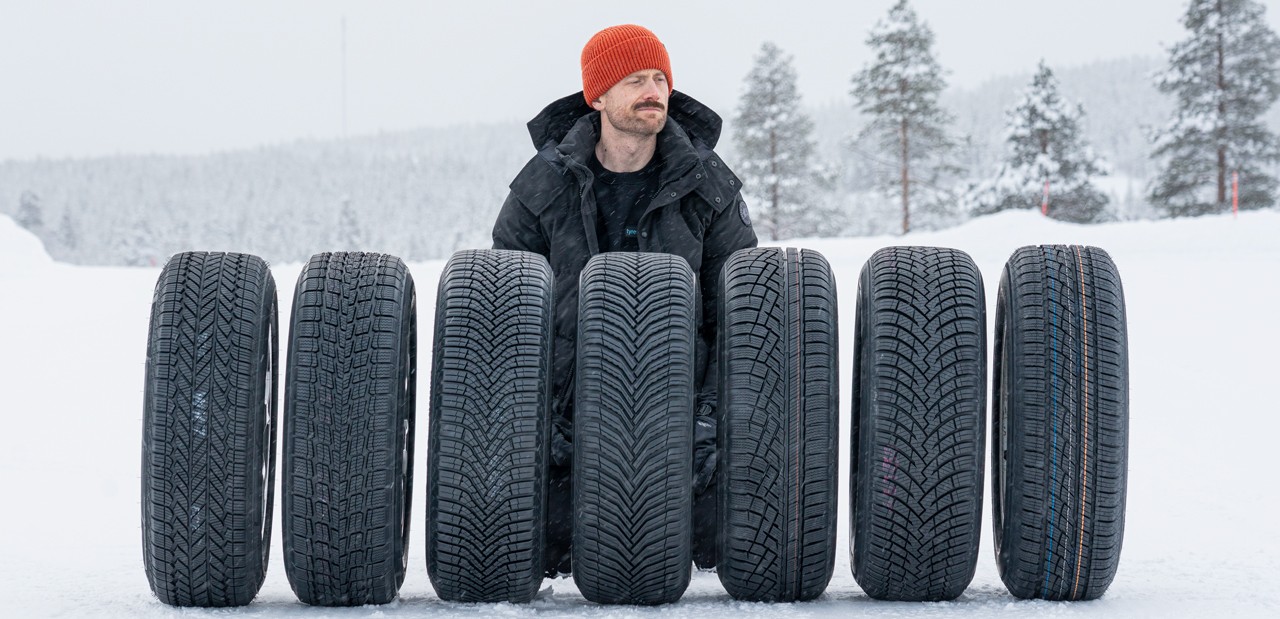
6 categories (19 tests)
| Test Category | Best Performer | Worst Performer | Difference |
|---|---|---|---|
| Dry (3 tests) | |||
| Dry Braking | ▲ Michelin CrossClimate 2 AW: 37.33 M | ▼ Firestone WeatherGrip: 44.32 M | 7.0 M (15.8%) |
| Dry Handling | ▲ Goodyear Assurance WeatherReady 2: 73.12 s | ▼ Bridgestone WeatherPeak: 74.76 s | 1.6 s (2.2%) |
| Subj. Dry Handling | ▲ Goodyear Assurance WeatherReady 2: 10 Points | ▼ Firestone WeatherGrip: 9.25 Points | 0.8 Points (8.1%) |
| Wet (5 tests) | |||
| Wet Braking | ▲ Goodyear Assurance WeatherReady 2: 32.85 M | ▼ Toyo Celsius 2: 38.24 M | 5.4 M (14.1%) |
| Wet Handling | ▲ Goodyear Assurance WeatherReady 2: 73.78 s | ▼ Toyo Celsius 2: 75.54 s | 1.8 s (2.3%) |
| Subj. Wet Handling | ▲ Goodyear Assurance WeatherReady 2: 10 Points | ▼ Toyo Celsius 2: 8.5 Points | 1.5 Points (17.6%) |
| Straight Aqua | ▲ Michelin CrossClimate 2 AW: 83.7 Km/H | ▼ Toyo Celsius 2: 77.9 Km/H | 5.8 Km/H (7.4%) |
| Curved Aquaplaning | ▲ Nokian Remedy WRG5: 9.5 m/sec2 | ▼ Goodyear Assurance WeatherReady 2: 7.1 m/sec2 | 2.4 m/sec2 (33.8%) |
| Snow (4 tests) | |||
| Snow Braking | ▲ Nokian Hakkapeliitta R5 SUV: 15.1 M | ▼ Pirelli Scorpion WeatherActive: 16.77 M | 1.7 M (10.0%) |
| Snow Traction | ▲ Nokian Hakkapeliitta R5 SUV: 3.08 s | ▼ Goodyear Assurance WeatherReady 2: 3.35 s | 0.3 s (8.1%) |
| Snow Handling | ▲ Nokian Hakkapeliitta R5 SUV: 79.8 s | ▼ Toyo Celsius 2: 86.78 s | 7.0 s (8.0%) |
| Subj. Snow Handling | ▲ Firestone WeatherGrip: 10 Points | ▼ Goodyear Assurance WeatherReady 2: 9 Points | 1.0 Points (11.1%) |
| Ice (2 tests) | |||
| Ice Braking | ▲ Nokian Hakkapeliitta R5 SUV: 8.9 M | ▼ Toyo Celsius 2: 11.67 M | 2.8 M (23.7%) |
| Ice Traction | ▲ Nokian Hakkapeliitta R5 SUV: 6.4 s | ▼ Toyo Celsius 2: 11.5 s | 5.1 s (44.3%) |
| Comfort (3 tests) | |||
| Subj. Comfort | ▲ Firestone WeatherGrip: 10 Points | ▼ Bridgestone WeatherPeak: 8.5 Points | 1.5 Points (17.6%) |
| Subj. Noise | ▲ Pirelli Scorpion WeatherActive: 10 Points | ▼ Firestone WeatherGrip: 8.5 Points | 1.5 Points (17.6%) |
| Noise | ▲ Pirelli Scorpion WeatherActive: 70.3 dB | ▼ Goodyear Assurance WeatherReady 2: 72.9 dB | 2.6 dB (3.6%) |
| Value (2 tests) | |||
| Value | ▲ Toyo Celsius 2: 10.33 Price/1000 | ▼ Michelin CrossClimate 2 AW: 14.67 Price/1000 | 4.3 Price/1000 (29.6%) |
| Rolling Resistance | ▲ Michelin CrossClimate 2 AW: 7.05 kg / t | ▼ Goodyear Assurance WeatherReady 2: 9.24 kg / t | 2.2 kg / t (23.7%) |
Wet
All weather tyres are a bunch of compromises by default - no tyre can be the best in every condition. This leaves the manufacturer with the ability to choose whether to go for an even balance of performance in the dry, wet and snow, or priorities one area more than others. Based on this wet testing it seems we have some differing opinions on how important wet is.
The results give us essentially three groups of tyres. None of them are budget tyres, so none have been horrific, however it is quite a big spread of wet abilities.

The Toyo, Firestone and Bridgestone were in one group, and perhaps this is the group that want the best snow and ice performance as they all struggled in the wet, offering almost minimal feedback and lots of understeer. Snow and wet are performance trade offs in tyre development, so we will find out later in the test if these tyres are more snow focused.
Then you have Nokian, Michelin and Pirelli. The Nokian felt more towards the first group subjectively but it did offer decent lateral grip. The Michelin turned out to be one of the most fun tyres as it actually let the car rotate, something to do with the sharp front end but braking was better than turning which helped the time, and the Pirelli was another step on, feeling sharp on the front end but taking longer than its peers to recover from slides.
Finally, there was the new Goodyear, the easiest and most consistent to drive fast, and the closest to a summer tyre in terms of handling.
Speaking of a summer tyre, I did have one in the test as reference. Just a touring suv summer tyre but it felt like a race tyre in comparison, the steering felt heavier, the brakes were sharper, and the grip was a good step on, even in these cooler test conditions.
Wet braking is one of those things where a tyre can really make a safety different in the real world the difference, and the wet braking results almost track wet handling perfectly, with the Goodyear once again having the best stopping distance and the Toyo the worse. The Pirelli and Michelin also perform well, but then the gap to 4th was over 10% worse, around 13ft, which is quite the difference and nearly the length of a car.
The Goodyear didn't so as well in the deeper water of the aquaplaning tests, with the Nokian, Michelin and Bridgestone all performing well.
Dry
The differences between these tyres in the dry is small. It ended up as Bridgestone, Toyo and Firestone having too little front grip to post a fast time, Michelin, Nokian and Pirelli all doing great, and Goodyear again feeling the most summer like with the quickest most direct steering. Sub limit, doing lane changes, they were all fine, but again the Bridgestone and Firestone just seemed a little less controlled when doing aggressive lane changes.

Dry braking did spread things out. The Michelin Crossclimate 2 pulled its usual party piece by being the best at stopping the car, with the Goodyear second, but not what I'd call a close second as it was 2 meters back. Then Pirelli and Nokian almost tied for third another meter back, it was almost another 2 meters to the toyo then ANOTHER 2 meters to the Bridgestone and Firestone. As an illustration, from 80 mph the Michelin would take 63 meters and the firestone 75 meters, Another way of looking at it, when you're stopped from 80 mph on the Michelin, you're still doing over 30 mph on the Firestone.
Snow
The good news for tyre shoppers is that all these tyres are very good in the snow! The bad news is for the Bridgestone and Firestone, which i'd hoped had traded some wet grip for class leading snow grip, but sadly that's not the case. They were very good, but not the best.
The slowest tyres around the lap were the Toyo and Goodyear, and I say slowest, both under 3% off the fastest lap time. Subjectively they were noticeably the 'worst' too, in that the steering inputs took slightly longer to register, and they felt a tiny bit down on traction but honestly, still good tyres in the snow.

Then you have the Pirelli, Bridgestone and Firestone, all under 2% off the best. I liked how the Bridgestone and Firestone felt once you had them turning, they dug in nicely and held on well, and the Pirelli was probably the most fun with a playful rear, but the rear took slightly longer to recover when sliding which slowed it down.
Finally it was the Nokian and Michelin. The Nokian was a nicely balanced tyre, I don't think it had as much grip overall as the Michelin but as it was a really rounded grip circle and everything happened exactly as you would expect, I found it easy to do consistently fast laps on.
And then of course we have the Michelin CrossClimate 2. The European version of this tyre, which is slightly different, is always one of the best in the snow and once again the US version proves it is the king in winter by having the fastest lap. Like the European version it's balance was a little understeer heavy, nice and safe, but also slow so I'm sure it has even more grip than this tiny advantage shows.
And finally, instead of including a summer tyre, I included one of the best, if not the best, winter tyre, the Nokian Hakkapeliitta R5. While there was just 3% between the best and worst all weather tyres, the R5 was nearly 10% ahead and you could feel it. Just a delight to drive. Keep that in mind if you live in a heavy snow climate.
The traction and braking data backed up the handling, with the Michelin CrossClimate 2 being the best in snow traction, closely followed by the Firestone and Nokian. Bridgestone jumped to the front in snow braking, with the Michelin in second and Nokian third. In both tests, the full winter tyre had a significant advantage over the pack
As promised I got ice data on smooth ice, which is the hardest type of ice to get grip on, and where compound really does make the difference. The Pirelli proved to be best overall, having the best ice traction and the second best ice braking, but the Michelin was again also excellent. Nokian finished third with very good traction, but lost out a little in braking, and as we saw in snow, the Goodyear, Firestone and Toyo struggled. The full winter tyre had its biggest advantage yet, finishing in a totally different class to the all weathers.
Comfort
Comfort and noise is very intricate, I've been driving on all sorts of surfaces and don't have a single solution for those of you who want comfort beyond everything else.
The Firestone did have the best subjective comfort overall, but of all the tyres, it was the only one that had a bit of a tread pattern whine in the cabin, which could be really annoying if it got worse as it wore. Then you had the Toyo that was excellent in noise, but firm over all the bumps. Then you had the goodyear which was composed over the stones, it had reassuring control of what it was doing, but hit pretty hard over the big impacts. Every tyre had it's positives and negatives, however there was one tyre that had a small lead in terms of manners, and that was the Pirelli. Not only did it have the lowest external noise, I also rated it the best for subjective noise, and the second best overall on all the surfaces. So there's your answer, if you want the ultimate refinement, it's the Pirelli. But really, they were so close you'll be happy with any of them.
Value
There is quite a spread in the rolling resistance levels of the tyres, in fact over 30%, with the Michelin the best and the Goodyear the worst. As a tyre uses around a fifth of the energy for a gas powered vehicle and around a quarter in an electric car, that means in theory, you could be using around 4-8% more gas / electricity. Not massive, but also significant.
Finally, I couldn't do a wear test this time to work out which tyre offers the best cost per mile in the real world, but as these all have treadwear warranties I CAN work out the warranted cost per mile, which I think is worth looking at. There's a 40% difference in cost per mile between the most expensive, the Michelin, and the cheapest, the toyo, however, if you take the time to compare that to the final results, you will see that more expensive generally means more better. Donut Media would be proud.
Results
1st: Michelin CrossClimate 2 AW | |||||||||||||||||||||||||||||||||||||||||||||||||||||||||||||||||||||||||||||||||||||||||||||||||||||||||||||||||||||||||
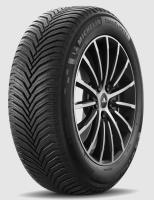
|
Best overall in the dry, best overall in the wet, Best overall in the snow, excellent on ice, lowest rolling resistance on test. Expensive, slightly reduced comfort. The Michelin CrossClimate 2 AW might be getting on in years, but it is still the category leading all weather tyre. It somehow manages to blend the best grip in nearly all conditions with the lowest rolling resistance, a hugely impressive blend of qualities.
Read Reviews | ||||||||||||||||||||||||||||||||||||||||||||||||||||||||||||||||||||||||||||||||||||||||||||||||||||||||||||||||||||||||
2nd: Goodyear Assurance WeatherReady 2 | |||||||||||||||||||||||||||||||||||||||||||||||||||||||||||||||||||||||||||||||||||||||||||||||||||||||||||||||||||||||||
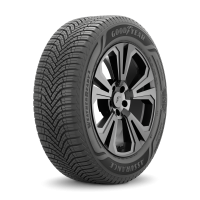
|
Excellent in the dry, best wet braking and wet handling, good comfort levels. Weaker hydroplaning performance, not the best on snow or ice (but way better than an all season or summer tyre), highest rolling resistance of the test. The new Goodyear Assurance WeatherReady 2 is solid all weather tyre. It might not be the best in the snow, but it was only 4.6% off overall, and it excels in the dry and wet. This is the tyre to fit if you live in a region with milder winters, and you don't mind taking a small hit on economy thanks to the high rolling resistance.
Read Reviews | ||||||||||||||||||||||||||||||||||||||||||||||||||||||||||||||||||||||||||||||||||||||||||||||||||||||||||||||||||||||||
2nd: Pirelli Scorpion WeatherActive | |||||||||||||||||||||||||||||||||||||||||||||||||||||||||||||||||||||||||||||||||||||||||||||||||||||||||||||||||||||||||

|
Good in the dry, very good in the wet grip tests, best overall on ice, best overall comfort, reasonable rolling resistance. Weak curved hydroplaning performance, not the best on snow (but way better than an all season or summer tyre). The Pirelli Scorpion WeatherActive is a very well balanced all weather tyre, with its only significant weakness found in curved hydroplaning. It's grip in the dry, wet and snow are all acceptable, and the combination of a low rolling resistance and the best ice performance highlights the strength of the compond.
Read Reviews | ||||||||||||||||||||||||||||||||||||||||||||||||||||||||||||||||||||||||||||||||||||||||||||||||||||||||||||||||||||||||
4th: Nokian Remedy WRG5 | |||||||||||||||||||||||||||||||||||||||||||||||||||||||||||||||||||||||||||||||||||||||||||||||||||||||||||||||||||||||||
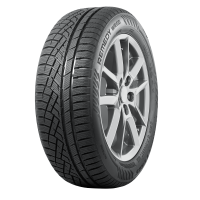
|
Good in the dry, very good in the deeper water wet tests, excellent on snow, good on ice, good comfort, well priced, low rolling resistance. Extended dry, wet and ice braking. The Nokian Remedy WRG5 is a solid all weather tyre. While it struggles a little in braking compared to the best, the other qualities make up for is, notably an impressive lead in the deeper water of the hydroplaning tests which are so important in wet winters. It also has an excellent all round performance on snow, excellent traction on smooth ice, good levels of comfort, and a low rolling resistance.
Read Reviews | ||||||||||||||||||||||||||||||||||||||||||||||||||||||||||||||||||||||||||||||||||||||||||||||||||||||||||||||||||||||||
5th: Bridgestone WeatherPeak | |||||||||||||||||||||||||||||||||||||||||||||||||||||||||||||||||||||||||||||||||||||||||||||||||||||||||||||||||||||||||

|
Good aquaplaning resistance, excellent snow grip, very low noise, well priced, very low rolling resistance. Reduced grip in the dry and wet, very long dry braking distances. The Bridgestone WeatherPeak is the only tyre with a 70,000 mile treadwear warranty, and while it has a very low rolling resistance, low noise and great grip in the snow, it's performance in the dry and wet, in particular dry braking need to be improved. Read Reviews | ||||||||||||||||||||||||||||||||||||||||||||||||||||||||||||||||||||||||||||||||||||||||||||||||||||||||||||||||||||||||
6th: Firestone WeatherGrip | |||||||||||||||||||||||||||||||||||||||||||||||||||||||||||||||||||||||||||||||||||||||||||||||||||||||||||||||||||||||||

|
Great snow grip, good comfort levels, low cost per mile, good rolling resistance. Reduced grip in the dry and wet, very long dry braking distances, low grip on ice, poor tread pattern noise. The Firestone WeatherGrip has a 65,000 mile treadwear warranty and a low purchase price making it one of the best value tyres of the test, a it also has excellent grip in the snow. Sadly it's dry, wet or ice grip could not match the snow performance, leaving the tyre with very long dry and wet braking distances. Read Reviews | ||||||||||||||||||||||||||||||||||||||||||||||||||||||||||||||||||||||||||||||||||||||||||||||||||||||||||||||||||||||||
7th: Toyo Celsius 2 | |||||||||||||||||||||||||||||||||||||||||||||||||||||||||||||||||||||||||||||||||||||||||||||||||||||||||||||||||||||||||
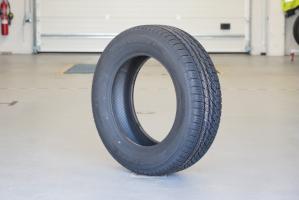
|
Good subjective dry handling, good in the snow, lowest price per mile. Long dry and wet braking distance, low hydroplaning resistance, very low grip on ice, high rolling resistance. The Toyo Celsius AS2 is well priced and good in the snow but thanks to limited grip in the dry, wet and ice, and a high rolling resistance, it is difficult to recommend this tyre as a year round product. Read Reviews | ||||||||||||||||||||||||||||||||||||||||||||||||||||||||||||||||||||||||||||||||||||||||||||||||||||||||||||||||||||||||
Reference Tyre: Nokian Hakkapeliitta R5 SUV | |||||||||||||||||||||||||||||||||||||||||||||||||||||||||||||||||||||||||||||||||||||||||||||||||||||||||||||||||||||||||
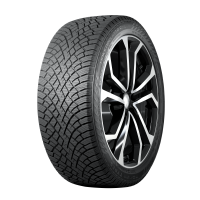
|
| ||||||||||||||||||||||||||||||||||||||||||||||||||||||||||||||||||||||||||||||||||||||||||||||||||||||||||||||||||||||||








